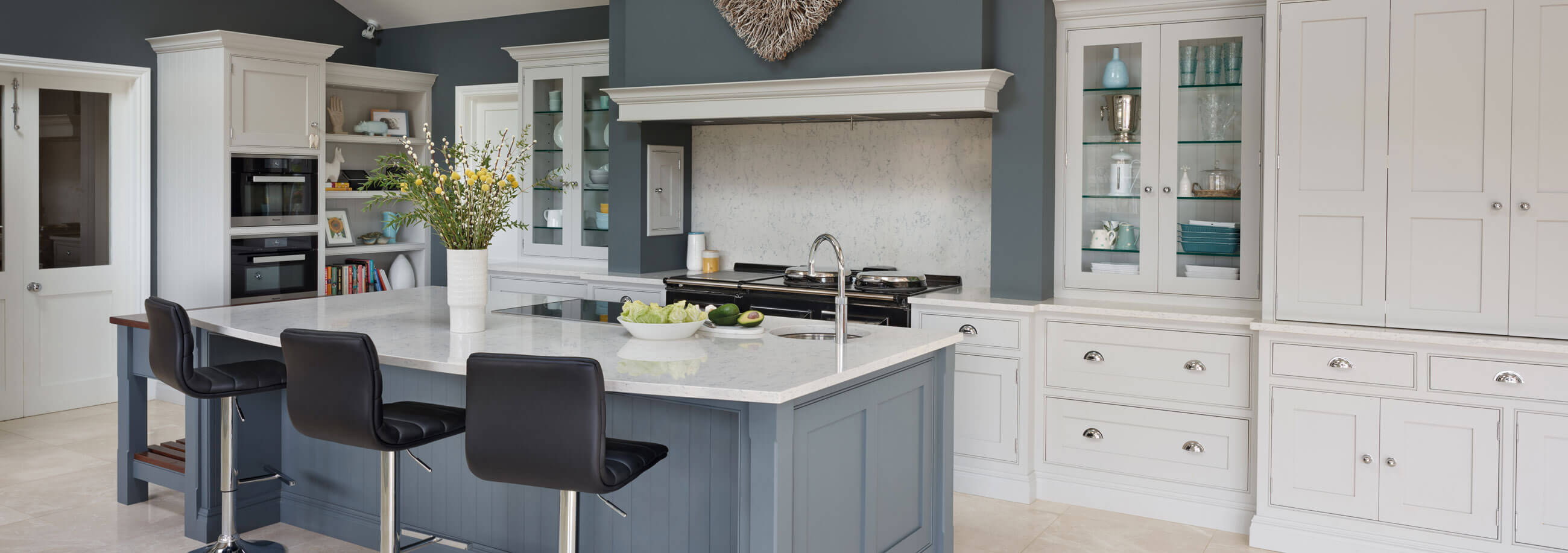

Mood boards are one of the easiest ways to collate kitchen design ideas, helping you to focus your mind on the project in hand. When it comes to planning a new space, whether that’s a kitchen extension or an open-plan hub of the home, the first step should be to create a mood board. They act as a fantastic tool to help you build on the smallest of ideas, even if you can’t visualise the end result. You may have a key colour, design style, statement lighting or surface finish you’ve seen in a home interest magazine in mind. All of these make fantastic starting points.
Mood boards can be created in two different forms, physically and digitally. A physical mood board may be a board full of magazine cuttings, colour swatches and material samples. A digital version, is a quick and easy option with many platforms such as Pinterest, designed especially for the job.
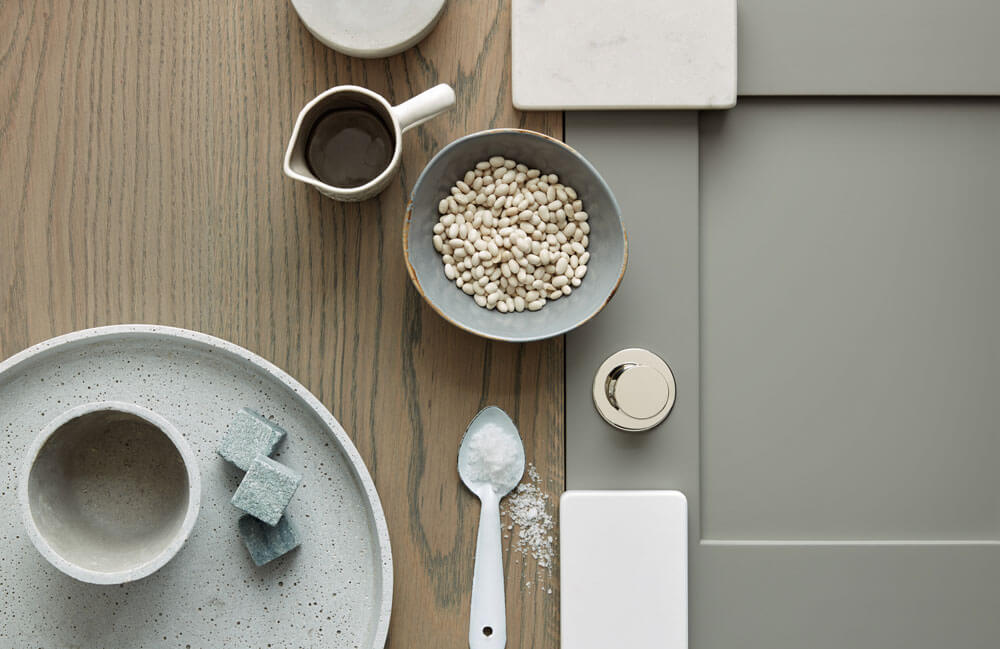
When it comes to sitting down with a kitchen designer, the first thing they will want to gain an understanding of is your style and how the space is going to be used. For example, are you a social chef that likes to catch up with guests while you prepare dinner. If so, cater to your guests with integrated island seating or a social bench area. Sometimes it may be hard to explain your personal style or the direction you want to go with, which is why digital mood boards are the easiest way to start.
Pinterest is a tool that is becoming ever more popular with interior designers and homeowners alike. It’s a place to quickly collate images in one place. Upload your own inspiration, source kitchen design ideas from brands online or repin other users images you simply love. It doesn’t matter how creative you are. If you have visual ideas down, our designers will find it easier to develop and shape a plan.
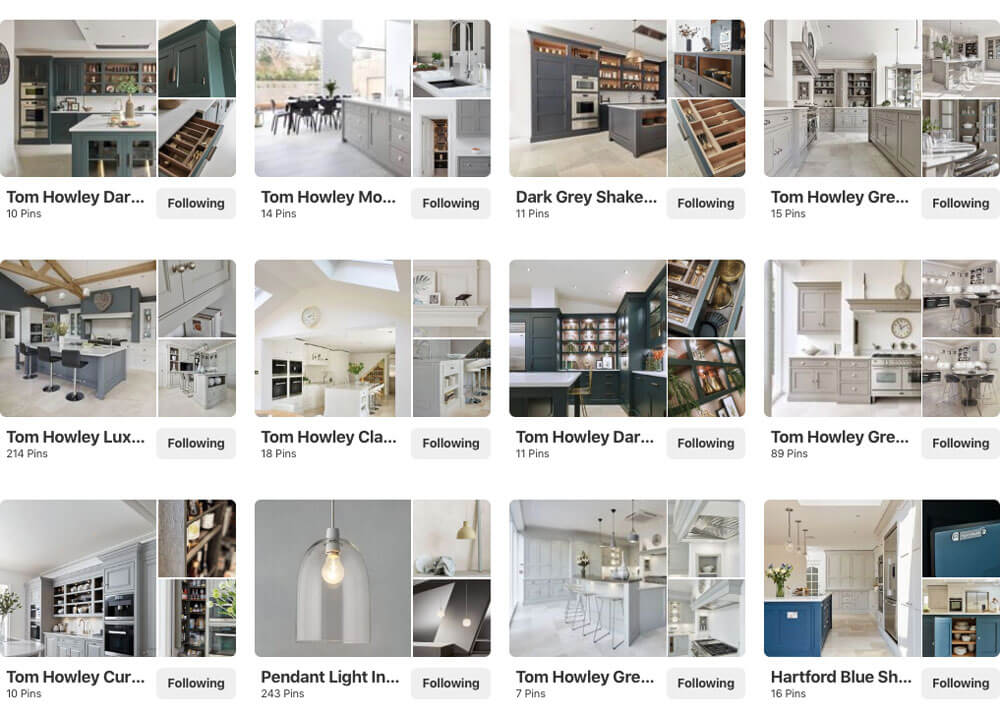
At first, start with several Pinterest mood boards rather than just one with hundreds of pins. You may want to create a board that’s specifically for cabinet colours and finishes, one that shows kitchen layouts and another that has storage features. Once you begin to develop these boards, you will start to see common trends. Dark cabinetry, colourful styling or just a general theme that you may not have otherwise thought about.
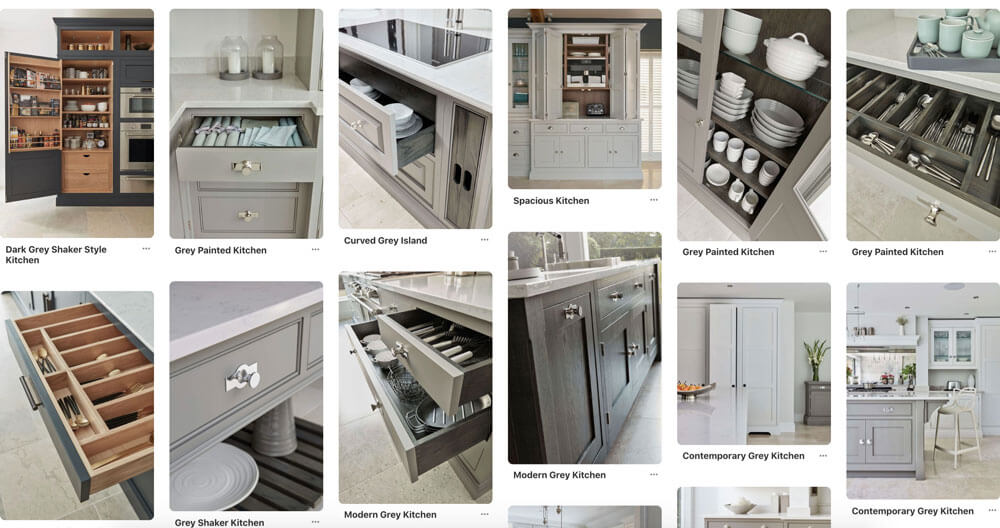
When it comes to creating your Pinterest boards and populating them with pins, it’s always a good idea to add descriptions. If a designer is looking at your board, they want to be able to pick out ideas with ease. If there are images that you’ve pinned solely for the colour, taps or handle finish, then you need to say so.
Top Tip: Pin from brands you have your eye on or save features you already have in the home to help ensure the space works as a whole. This may be a style of extension, door and window designs, architectural features such as beams or wall colours.
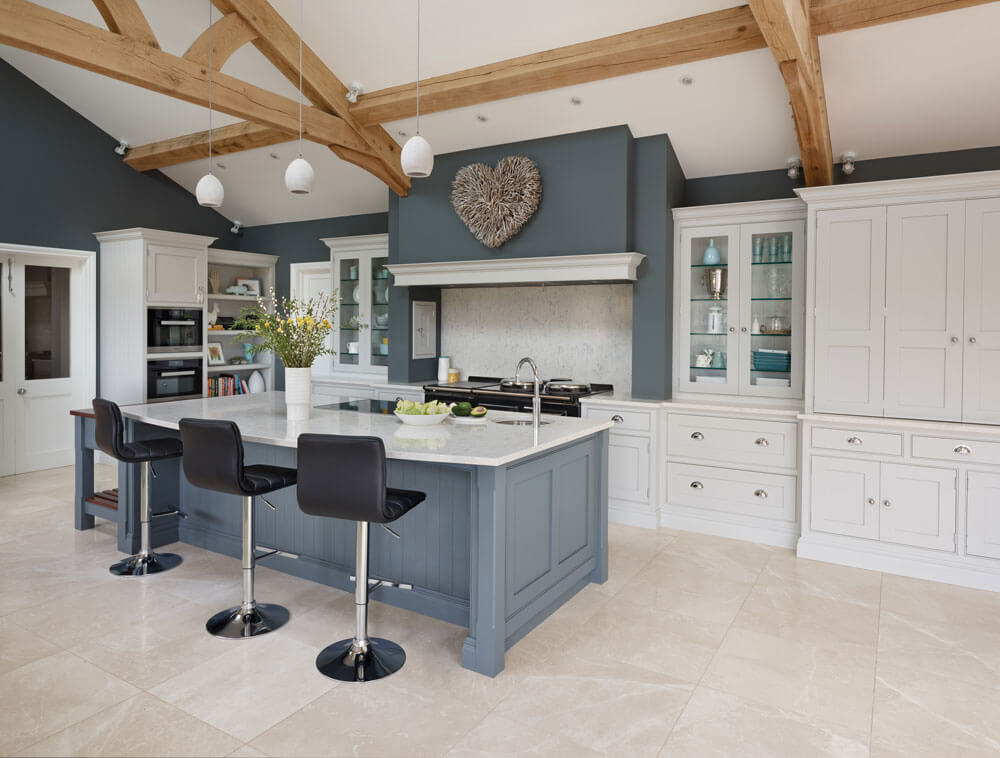
Keep in mind your space and budgets. If you have a small galley style kitchen, try and find inspiration that displays this particular layout. This doesn’t mean you can’t implement kitchen design ideas from more extravagant spaces, just remember what can be achieved and what can’t.
Top Tip: Find similar images to those you already love using Pinterest’s visual discovery tool. This tool helps you instantly search for similar ideas, even letting you zoom into the picture to search for specific items. Find everything from kitchen chairs, handles, lighting or dishware.
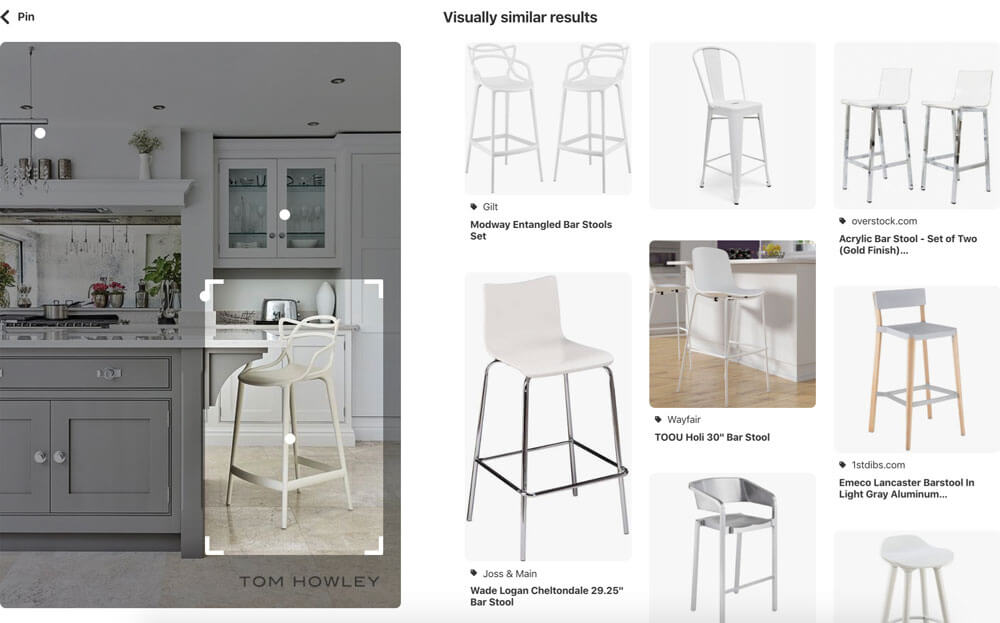
Tom Howley Contemporary Kitchen
Once you’ve been working on your separate boards and feel you’re happy with your ideas, it’s time to start editing them down. Recurring ideas will appear throughout your boards, and images will stand out above the rest such as two-toned cabinetry, curved islands, work surface finishes or key appliances.
An overarching theme can become prominent throughout your mood boards, maybe a minimal space or a traditional country style kitchen. Make sure you include these images in your final board with descriptions on the style rather than a specific kitchen product. Remember your final board doesn’t have to include all kitchen images; pin tile patterns, textures, colour swatches, even artwork or places of interest. Anything that inspires and influences the aesthetic of your design will help your designer.
Curate your final board so its clear and easy to navigate. Write descriptions of what it is you like on each image and keep the board brief so a designer can clearly see your vision. Discover more of our own Pinterest inspiration and exquisite kitchen designs ideas here.
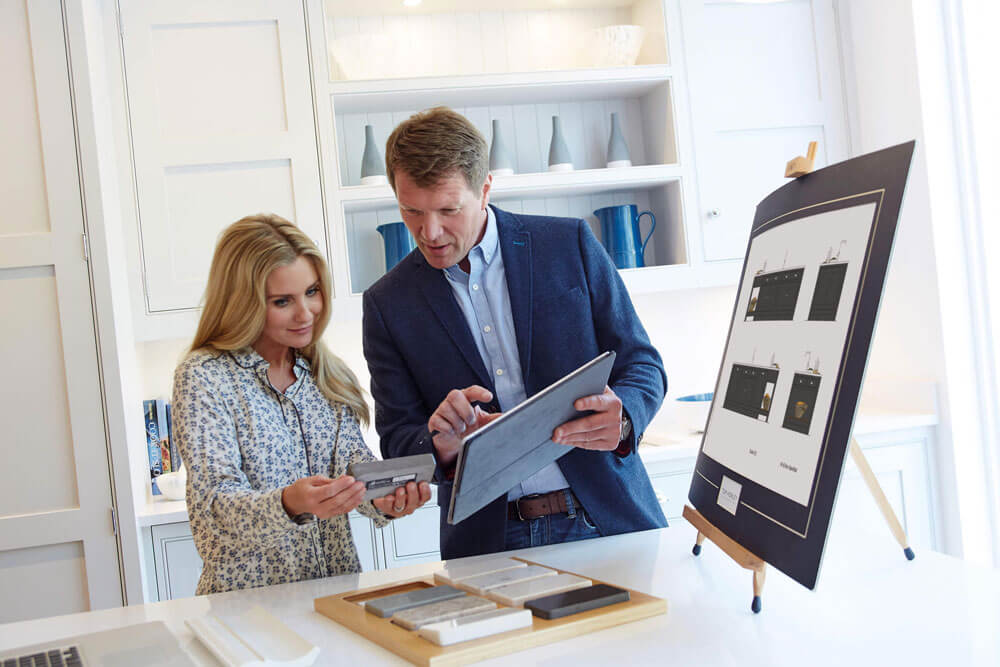
There are so many avenues to draw inspiration. However, Pinterest is a great place to start – and means the designer can clearly see what it is you’re trying to achieve.
If you’re starting your kitchen renovation journey, then our designers are here to help bring your kitchen design ideas to life. You’ll be able to find our experts in our showrooms throughout the UK. Find your nearest here or book your free design visit today.